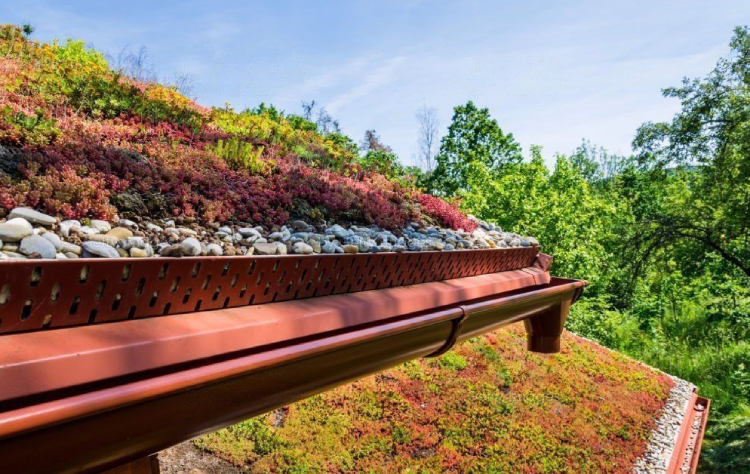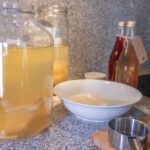Some outdoor plants are able to survive both winter and summer. These are also some other plants that grow in regions with a temperate climate.
The plant that survives the winter is called deciduous and it loses its leaves during this time. Some plants can grow in regions with cold winters but not hot summers, like the maple tree for example.
Some people prefer planting a garden that will look good all year round, so they should consider planting different types of plants during every season.
So if you are one of those people, stay tuned until the end to find out the best outdoor plants to plant for all year round.
9 Outdoor Plants that Survive Winter and Summer
The following list includes some of the best outdoor plants that can survive winter and summer in any conditions and environment.
The list is randomly sorted so you can pick the plant you like the most.
Ferns

There are many types of fern plants. Some of them are semi-evergreen but some others are completely evergreen. The semi-evergreen plants usually lose their leaves, but evergreen ones keep their leaves even in the winter.
Ferns are planted in shady areas because they do not like direct sunlight, but partial sunlight is the best option for many of them.
In addition, Ferns don’t need a lot of water because they only require just one or two gallons of water each week which means that they do not need too much maintenance to survive and grow.
The most common types of fern plants that people usually prefer to add to their gardens are maidenhair, hart’s tongue, staghorn, bird’s nest, and sword ferns.
Bamboo

This might surprise you as bamboo is not a common plant that people grow in their outdoor gardens, but if you have enough space or you want to make an organic fence without spending a ton of money to build a wooden fence then planting bamboo is your way to go!
Bamboo plants are very hardy and can grow in a variety of different environments. They are one of the fastest growing plants on earth and can grow to be up to 20 or even 30 feet tall. Bamboo also has a large underground root system to help provide nutrients.
Bamboo plants characteristically have long, slender stems. They come in a variety of colors, including green, brown, yellow, red and purple.
Bergenia

Bergenia plants are not only easy to care for, but they also have a long lifespan. They are hardy evergreen plants, and they can survive the yearly change in the climate, even if you live in a country with heavy winters.
The best time to plant Bergenia is in the spring or early summer. It will be able to survive the cold winter months, and it will grow with more vigour during the warmer months of spring and summer.
You can fertilize your Bergenia every three or four weeks during its first year.
Pothos

Pothos or devil’s ivy is a plant with many and several characteristics. In the wild, like in forests and jungles it can grow up to 30 feet tall. The leaves are often green and heart-shaped, and the flowers are white or light purple.
Pothos plants need a lot of water, so they should be watered once per week or two weeks. They also need plenty of sunlight, so they should be placed near a window that gets plenty of natural light.
The Pothos plant is native to South America, but it has been cultivated all over the world because of its beauty and easy maintenance requirements. It can grow in any type of soil as long as it is well-drained and moist. It also needs at least ten hours of sunlight per day to thrive properly.
Cactus

Cactus plants are among the most popular choices for indoor gardening. However, there is a lot of confusion about the various types of cacti and their care requirements. Here are some basic facts to help you choose and care for your cactus plant.
Cacti come in many shapes and sizes, but they all share the same basic characteristics: thick stems, fleshy leaves, and blooms that come from the top of the plant rather than from the stem.
The three main types of cacti are barrel or columnar (tall with a round body), creeping (low growing with a flat body) and branching (shrubby).
The good news about this plant is that it doesn’t require any water to survive or to grow.
Cactus plants need bright light to grow well indoors. You can plant them in your outdoor garden but in most cases, people prefer to have them in pots outside of their homes.
Creeping Phlox

Creeping Phlox is a beautiful ground plant that blooms in the springtime. But did you know that this plant is actually an evergreen? That’s right.
Creeping Phlox stays green and keep its leaves all year round surviving cold winters and hot summers.
However, phlox shouldn’t stay dry for a long time because you should water them during dry spells or whenever the soil seems dry. On average, these plants require a bit of moist ground to survive and grow.
This plant is perfect for adding a splash of colour to your garden in the winter months. So if you’re looking for a plant and especially a flower that you can enjoy year-round, be sure to add some Creeping Phlox to your garden!
Golden Sword Yucca

The Golden Sword Yucca is a popular plant to have in your home. It is also known as the pineapple yucca, and it can grow up to 2-3 meters tall.
The Golden Sword Yucca plant has a few characteristics that make it so popular. The first characteristic is that the leaves are long, thin and green in colour.
Secondly, the flowers are yellow and usually bloom once per season. Thirdly, it is an evergreen plant that grows well in dry climates. Lastly, the Golden Sword Yucca has a long taproot which makes it difficult to transplant from one place to another.
Also, this plant is very easy to maintain because you need to water it about once a week or even ten days.
Coneflower

The coneflower is another flower that makes it on our list and is probably the toughest flower around. This flower usually grows a variety of blooms like red, pink, orange, yellow and white.
Researchers have found that this hardy plant can survive temperatures as low as -30 degrees Celsius. That means that the Coneflower can withstand even the harshest winter conditions.
So how does the Coneflower manage to survive such extreme temperatures?
Well, it turns out that the Coneflower has a special mechanism that allows it to protect itself from the cold. When the temperature drops, the Coneflower’s leaves curl up tightly around the flower head. This helps to trap heat and protect the flower from the cold.
The water requirements for this flower are not something extreme because they only need an inch of water when you see that the soil is wet, or it hasn’t rained for a long time.
So if you’re looking for a colorful flower to decorate your garden that can withstand cold winters and extreme weather conditions, look no further than the Coneflower.
Stonecrop

Stonecrop flowers are beautiful, low-maintenance plants that can add a touch of greenery to any home. These hardy plants are native to hot, dry climates and can survive in a range of conditions. Stonecrops are also known for their ability to thrive in poor soil and survive drought conditions.
Because of their rugged nature, stone crops are an excellent choice for those who want to add a bit of greenery to their home but don’t have the time or patience to care for delicate plants.
Additionally, stonecrops are relatively inexpensive and easy to find, making them a great option for those on a budget to decorate the garden.
If you’re looking for a beautiful, with almost no maintenance plant to add to your home, consider stonecrop succulents. These tough plants can withstand a range of conditions and will add a colorful touch to your backyard.
FAQ
What plant can withstand the most cold?
The plant that can withstand the most cold is the Arctic Willow.
The Arctic Willow is a plant that has been in the arctic for over 10,000 years. This plant can withstand temperatures as low as -50 degrees Celsius (-58 degrees Fahrenheit).
Which plant has the highest lifespan?
The plant with the highest lifespan is Welwitschia mirabilis. There are some cases that it can live for up to 1,000 years.
Conclusion
In conclusion, there are a variety of outdoor plants that can survive both winter and summer. Some of the most common include hibiscus, impatiens, and begonias. While these plants are generally low maintenance, they do require some extra care in extreme conditions. If you found our article useful, make sure to share this blog post with your friends that are looking for a plant that can withstand both hot and cold temperatures.

As a dedicated mother and passionate software developer, she weaves her diverse experiences into captivating stories that inspire and engage readers. Emma's love for sustainable living and environmental consciousness permeates both her personal and professional life. When she's not immersed in the world of coding and software development, Emma can be found nurturing her family and tending to her thriving organic garden. Her commitment to sustainable practices extends to every aspect of her life, from repurposing household items to embracing eco-friendly technologies.










